








MIDWEEK UPDATE 1 SEPTEMBER 2022Google Banner Ad   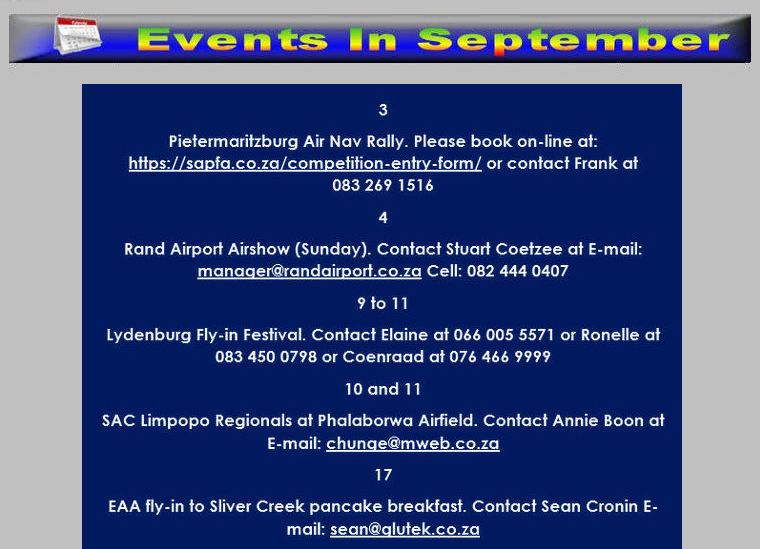 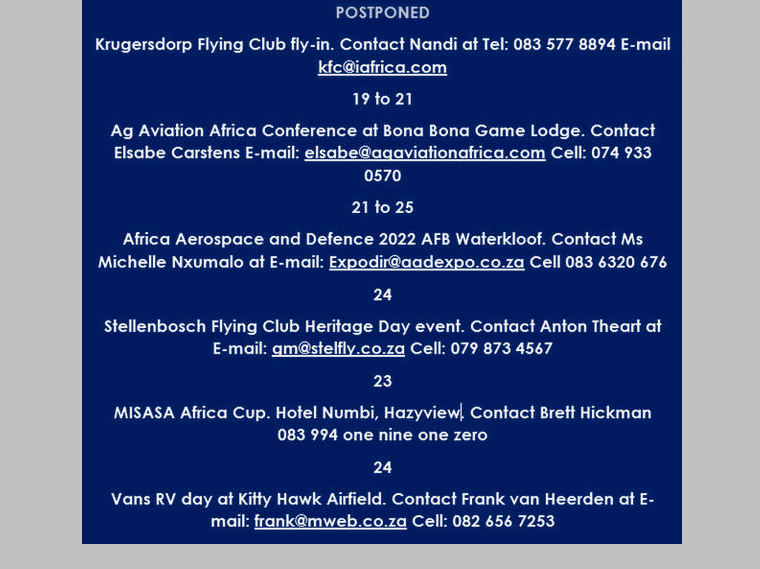  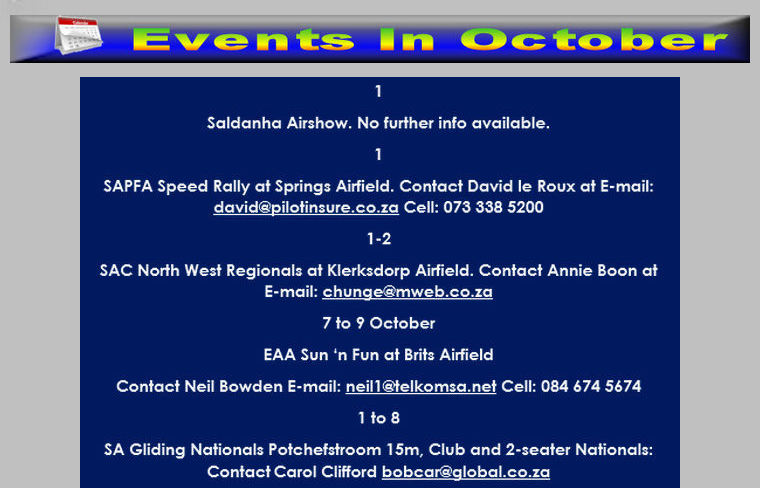 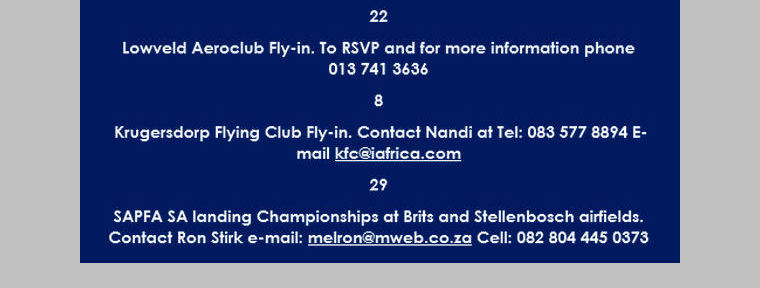  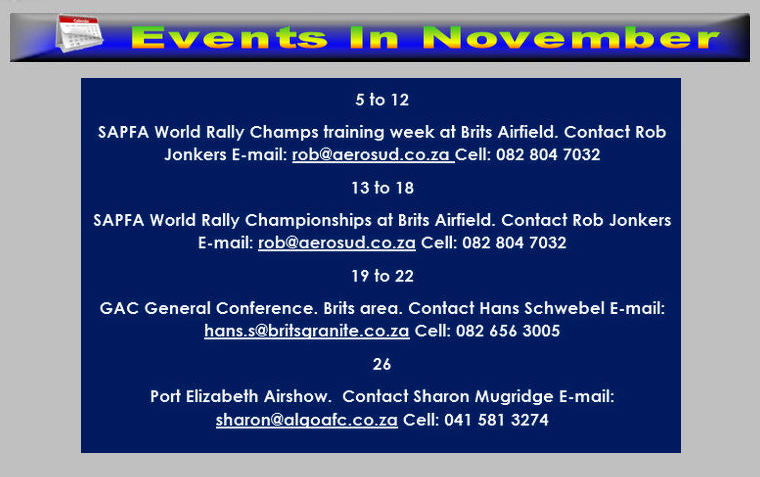   WILL SAAF GRIPENS EVER FLY? defenceWeb Air Force Base (AFB) Makhado-based 2 Squadron has not been able to fly its Gripens since August last year. This sad state of affairs was brought about because budget cuts and disagreements over contract terms resulted in the support contracts with Saab and GKN being allowed to lapse. African Defence Review (ADR) director Darren Olivier, writing in FlightCom, notes, tellingly: "Without support contracts in place, or adequately certified workarounds, the SAAF Military Airworthiness Board cannot issue or renew approvals for flight". The first inkling all was not well at the Limpopo base came in December when Department of Defence (DoD) Head of Communication (HoC) Siphiwe Dlamini indicated the SAAF Gripens were "temporarily grounded". He neglected to say the same applied to the squadron level mission trainer (SqLMT) at Makhado, meaning pilots could not retain currency via simulator hours. SA National Defence Force (SANDF) Chief General Rudzani Maphwanya when interviewed by the DStv actuality programme Carte Blanche in June indicated the situation was resolved and the Gripens would be flying soon. Other input, slightly contrary, came from Democratic Alliance (DA) shadow defence and military veterans minister Kobus Marais. He told defenceWeb that Minister Thandi Modise had "high level discussions" with Saab in July at the Farnborough air show. "I was told - from the horse's mouth - the discussions will see this disagreement end." An even vaguer response came from the Directorate: Corporate Communication (DCC) of the SANDF in response to a June defenceWeb enquiry. "The negotiation has been concluded and the process has reached the final phase awaiting final contract placement. Maintenance work has been ongoing even during the times of not having a contract. After the final placement of the contract, certain spares will be ordered and following delivery from the contract, flights will resume," the response read. In common with replies to Gripen flying it, like Maphwanya, avoids any indication of date. Olivier calls the Gripen situation "disastrous" writing "there's no way to put a positive spin or brave face on this situation". He explains: "For a year the country has been without any air defence capability whatsoever. And yet leadership complacently stood by with no apparent sense of urgency while a critical strategic capability acquired at great cost has fallen apart. One would have thought those in positions of power would have been moving heaven and earth to resolve the situation". "The SAAF and Armscor, as the procurement agency, haven't been entirely idle and have engaged in back and forth negotiations with both Saab and GKN (Gripen engine supplier) to find a workable solution that fits in with the SAAF's pitiful budget allocation, yet provides the necessary level of support to keep these highly complex aircraft flying. Progress has been slow, suffocated by red tape and indecision at the highest levels and characterised by stop-start spurts of activity and waiting that wasted crucial time. "Worse, negotiations have been taking place since early 2021, long before the contract was due to lapse and providing plenty of time to avoid the situation". "At the most basic level, the cause is simple: The SAAF Combat Systems Directorate has an annual budget of just over R300 million, ludicrously inadequate to maintain even a single modern fighter squadron, let alone a squadron of Hawk Mk 120 fighter-trainers alongside it. Benchmarking against similar fighter squadrons around the world shows an annual budget of R1 billion is needed just to maintain a basic capability level, with R3 billion or so a year needed for full operational capability and utilisation". "Expecting to work with just R300-400 million a year falls in the realm of fantasy and magical thinking, not sound governance. Add to that chronic indecision plaguing the SANDF and indeed South Africa as a whole of late, increasing red tape around procurement and misapplication of preferential procurement regulations to strategic defence contracts that clearly can't support them and it's no surprise things have reached this point". "Absurdly, according to people familiar with the negotiations, much of the time was wasted by Armscor's insistence on applying the 30% local content requirement from the preferential procurement regulations, even though there aren't any local companies that could perform any of the work required. At best, it would mean some local company acting entirely as a rent seeker, placing orders with Saab and GKN for spare parts and adding its own mark up on top while adding no value and harming what's already a low margin contract". "This type of requirement is a problem that has increasingly crept into service and support contracts for key SANDF systems, even when the OEM is the only possible supplier. It makes maintenance costs much higher than they need to be and contributes to low availability of critical systems". "Questions are being raised in SANDF HQ about whether Armscor continues to be an enabler of the SANDF or has become a harmful hindrance. Distrust apparently played a part in delaying negotiations".  "Despite these constraints, all sides finally reached a breakthrough earlier this month (August) and agreed, in principle and after a number of proposals and revisions, to a new three year support contract that almost fits the pre-defined budget and provides a limited return to service". "It's not perfect, for either side, but is at least a way forward and buys time. At the time of going to press, however, it seems neither the airframe contract with Saab nor the engine contract with GKN have yet been finalised, signed and paid for. This despite an assurance provided by military leadership to the news programme Carte Blanche in June that the situation had been resolved". "Worse, even if all outstanding contracts are signed today, it will take many months for the first aircraft to return to the air after all the necessary maintenance and checks are completed. It will take just as long for air and ground crews to regain their currencies and qualifications, as none have been able to preserve them over a grounding this extensive. It hasn't even been possible for pilots to continue training on the two simulators in the SqLMT at Makhado, because those fall under the same contract and have not been operational either. In any case they also need relatively substantial upgrades." In another telling implication of the SAAF, Olivier has it the airborne arm of the SANDF "will not have any real fighter capability before 2023 at the earliest and only for a handful of aircraft at first. There is now no hope of returning to capability levels and numbers 2 Squadron had before the grounding. At best only a token force can be restored by 2024/2025 under current funding levels". There is a small chance of one or two Gripens flying at the Africa Aerospace and Defence (AAD) exhibition next month, as it is believed Saab has been helping the SAAF with Gripen serviceability while the contract renewal is being finalised. Worse is coming on the horizon because key obsolescence issues haven't been addressed. "The SAAF is going to be faced with another budget crisis on the Gripens when it next needs to renew the contract. Then it may be impossible to resolve" is Olivier's gloomy prognosis.  DLAMINI DEFENDS PRESIDENTIAL CHARTER FLIGHT defenceWeb 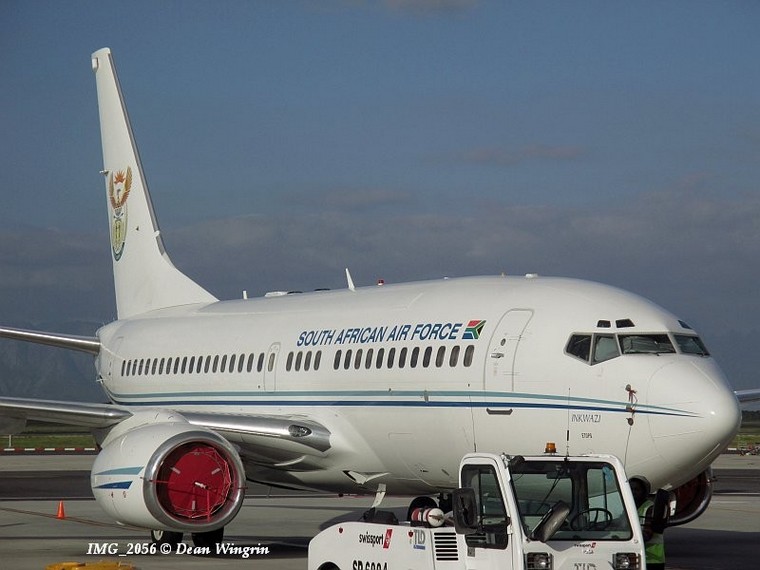 Photo by Dean Wingrin The Department of Defence (DoD), in the form of its Head of Communication (HoC), came out with verbal guns blazing to defend a chartered aircraft taking President Cyril Ramaphosa and his entourage to a Southern African Development Community (SADC) summit in the Democratic Republic of Congo last week. The charter of an SAA (South African Airways) Airbus A340, cost according to weekend news reports, R2.6 million. This, HoC Siphiwe Dlamini maintains, was in fact the lowest quote received for the flight. Quotations were requested from, what he said in a statement, were "potential service providers". "The national carrier, SAA, was one of several bidders from who the SA Air Force (SAAF) sourced quotes. SAA filed the lowest quote at under R1.6 million - R1 million less than the R2.6 million 'estimate' the Sunday Times tried to pass off as fact. Two quotes for significantly smaller aircraft came close to R1.9 million each. "In arriving at its estimate, the Sunday Times regrettably relied on hearsay from alleged sources in the aviation industry which the DoD believes the newspaper used to cover up unethical sourcing of information from unauthorised [Department of Defence} personnel. The Sunday Times was also wrong on the number of passengers on the flights to and from Kinshasa," the statement has him saying. There were 14 passengers aboard the French built, four-engined aircraft for the South Africa/DR Congo flight with 55 coming back, according to the statement. The need for a charter was said by Dlamini to be because "Inkwazi", the VVIP Boeing 737-7ED operated by 21 Squadron, along with other executive aircraft in the Air Force Base (AFB) Waterkloof squadron inventory, "are currently out of commission". He gives no reasons for Inkwazi's grounding which weekend reports have is due to non-payment of subscription fees for the Jeppesen flight database. The SAAF finds itself in the proverbial financial pickle, unable to fly its frontline fighters or use a simulator to maintain pilot currency on the Gripen. The airborne component of the SA National Defence Force (SANDF) battles to keep its fleet of workhorse Oryx medium transport helicopters airworthy and four Super Lynx maritime helicopters have been grounded for some time. As far as airlift is concerned, 28 Squadron can apparently offer two C-130BZs at any given time as the SAAF's lone heavy transport unit. Darren Olivier, African Defence Review director, confirmed that Inkwazi's grounding is because the SAAF has not paid its monthly subscription fees to update the flight database. No aircraft flying internationally is allowed to fly without the latest flight data. Apart from the VIP fleet, this also affects the C-130BZ Hercules supply flights into the Democratic Republic of Congo and Mozambique. "Contract renewal decisions are a mess in the Air Force at the moment, both because of the tight budget and some questionable decisions by senior leadership," Olivier maintains. "It's time for a complete top to bottom rethink of procurement in the SANDF and whether it truly makes sense to apply things like local content from Preferential Procurement Policy Framework Act regulations to services only foreign OEMs can provide. It's poor strategic thinking". "If you're mandating that a key capability, be established and maintained locally for security of supply, that's one thing. But SANDF procurement is ever increasingly just the use of local middlemen skimming off the top by reselling services and equipment provided by foreign suppliers," Olivier stated. Elaborating further on the Inkwazi's grounding, Olivier explained that the non-renewal of flight databases was amongst contracts (including for fuel and spares) affected by National Treasury's February order to stop advertising new tenders. Although this was lifted in May with additional requirements, "the DoD interpreted it as a ban. For some reason that process of getting Treasury's exemption for SANDF tenders in certain areas has been going terribly." The Jeppesen database contract, Olivier continues, is maintained by the SAAF's Directorate for Air Safety and renewed every 3 years. It expired on 31 March 2022 in the middle of the tender moratorium. Because of the exemption issues no new tender has been issued. An emergency procurement was denied. "I'm as yet unsure as to exactly when the databases expired, which forced the SAAF to ground the aircraft. It's possible there was a slightly longer grace period negotiated or similar. Either way, once the contract expired it was inevitable that this outcome would occur," he stated. Olivier does not blame the SAAF's Directorate of Air Safety, or arguably even the Air Force, which did everything it could by the book. "The root cause of the issue is that the tender process is broken, the DoD is becoming ever less capable of managing an ever more convoluted process with requirements that don't suit defence needs, and neither the Minister of Defence nor Secretary of Defence are effective". "The moratorium and subsequent issues have seriously affected all SAAF procurement tenders including those for fuel, spare parts, and maintenance. It's a slow-moving disaster without any real sense of urgency from the top," Olivier concluded.  SAAF CARRYING OUT FORCE PREP EXERCISE AHEAD OF VIKELA DEPLOYMENT defencWeb  In accordance with a major primary aim of the four SA National Defence Force (SANDF) services, the SA Air Force (SAAF) is executing mission readiness training in anticipation of deployment by the Joint Operations Division to Mozambique. This year's Exercise Winter Solstice, currently underway at the air force's Ditholo training area north of Pretoria, is concentrating on external deployments of the air force with the majority of preparation for Operation Vikela in Mozambique's Cabo Delgado province. Ad Astra writer Captain Tebogo August reports for SANDF social media that the exercise is primarily for SAAF personnel ahead of deployment to South Africa's eastern neighbour as part of SAMIM (Southern African Development Community Mission in Mozambique) next month (September). The South African component of the regional bloc deployment is termed Operation Vikela. Winter Solstice 2022 forms part of mission readiness training for "any operational deploy ability tasking's that may arise internally and externally on the African continent". The exercise is reality-based and scenario-supported marking the initial stages of finalising mission readiness training, ops room procedures and other mission essential tasks (MET) to be conducted in theatres of operation, with Mozambique top of the list. The exercise staged an open day this week with Chief of the SA Air Force Lieutenant General Wiseman Mbambo on hand to see how "his" men and women, in camouflage work dress and flying overalls as opposed to blue uniforms, were progressing. This, according to him, was important as the last exercise of similar nature took place seven years ago. "We need to resuscitate the vigour for exercises. It is important to spend more time on operations and refine our skills. As we move from one exercise to the other, may we leave with the required skills," he told exercise participants, adding: "I commend and encourage you as you go forward to be more robust and uncompromising". This Mbambo sees as essential to "developing the measure to survive the era of limited resources". The open day saw a demonstration of SA Air Force capabilities, with Hawk Mk 120 lead-in fighter-trainers taking part along with Oryx transport helicopters and C212 light transports. The Air Force also conducted a parachute drop. Summing up the three week-long exercise Tebogo writes: "This combat readiness undertaking puts the men and women of the SANDF's aviation component through its paces and creates an environment in which pilots, aircrew, ground crew, technicians and logisticians have the opportunity to enhance and evaluate the way they bring individual and combined skills into operation in support of the SA Army, the SA Navy (SAN) and the SA Military Health Service (SAMHS)".  NEW BOSS FOR LANGEBAANWEG ASU defenceWeb 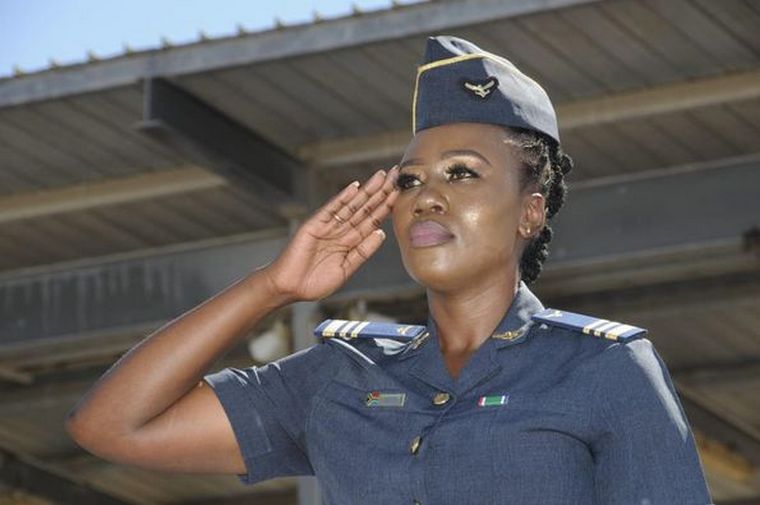 A cycle that saw her start as an apprentice aircraft electrician came full circle when Lieutenant Colonel Florah Legodi was appointed commander of 2 Air Servicing Unit (ASU) at Air Force Base (AFB) Langebaanweg. Legodi is a 22-year veteran in the SA Air Force (SAAF) admitting to SANDF social media writer Lieutenant Colonel Mosepedi Manaka she's come a long way since starting apprentice training at 68 Air School in Lyttelton, Centurion. Her first posting was to 2 Squadron at AFB Makhado when the Cheetah was still in service. Legodi has the honour of qualifying as the first woman Cheetah electrical maintenance ground crew staffer. A highlight of her career was going to Sweden in 2006 as one of a SAAF team tasked with initial analysis of a technical support structure for the then still flying 2 Squadron Gripens. Back at 68 in 2007 as a technical training instructor, Legodi took and completed officer's formative in 2009 earning the singular honour of best learner on course. Other stops during her time to date in the blue uniform are mechanical support officer in charge of the Component Section at AFB Langebaanweg, training officer 2 ASU Detached, AFB Ysterplaat as well as 3 ASU training and logistic control centre officer at AFB Makhado. In March this year Legodi was appointed the first female commander at 2 Air Servicing Unit at Air Force Base Langebaanweg. Legodi has 10 sections reporting to her, all tasked with ensuring Central Flying School's PC-7 Mk IIs are airworthy.  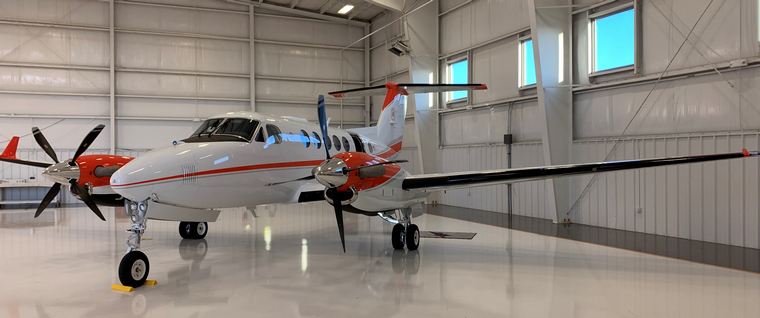 Textron Aviation today announced it has delivered two Beechcraft King Air 260 aircraft to the U.S. Forest Service. The aircraft will perform wildfire mapping missions. The Beechcraft King Air 260 is designed and manufactured by Textron Aviation Inc., a Textron Inc. (NYSE:TXT) company. Whether for the wildfire detection and mapping, resource management, aerial supervision module/lead plane or air attack, the King Air continues to demonstrate its leadership in this mission. "Customer faith in our legendary products and trust in our company and our team are at the core of our enduring relationship with U.S Forest Service". Bob Gibbs, Vice President, Special Mission Sales for Textron Aviation in a statement said; "We are honoured the U.S. Forest Service has added the King Air 260 to its fleet," said Bob Gibbs, Vice President, Special Mission Sales for Textron Aviation. "Whether for the wildfire detection and mapping, resource management, aerial supervision module/lead plane or air attack, the King Air continues to demonstrate its leadership in this mission. Customer faith in our legendary products and trust in our company and our team are at the core of our enduring relationship with U.S Forest Service." The King Air 260 aircraft have been modified for the installation of the latest infrared (IR) sensing technology, the Overwatch Imaging TK-9 Earthwatch Airborne Sensor, along with legacy U.S. Forest Service sensors, that can accurately map wildfires, even at night and through smoke. This information is critical for firefighters to have when the exact extent of a fire is not known due to darkness, smoke, size of the fire, rapid spread, or complex terrain. IR mapping aircraft can also be used to detect new fires started by lightning when they are very small. Endless Special Mission Possibilities When government, military and commercial customers want airborne solutions for critical missions, they turn to Textron Aviation. The company's aviation solutions provide the high performance and flight characteristics required to address the unique challenges of special mission operations. With unparalleled quality, versatility and low operating costs, Textron Aviation products are preferred for air ambulance, ISR, utility transport, aerial survey, flight inspection, training and a number of other special operations. King Air Leadership More than 7,700 Beechcraft King Air turboprops have been delivered to customers around the world since 1964, making it the best-selling business turboprop family in the world. The worldwide fleet has surpassed 62 million flight hours in its 58 years, serving roles in all branches of the U.S. military and flying both commercial and special mission rolls around the world. About the King Air 260 The King Air 260 brings state-of-the art technology to the cockpit and offers greater ease of flight. The cockpit features the Innovative Solutions & Support (IS&S) ThrustSense Autothrottle system, which supports pilots in their critical mission of delivering people or cargo by automatically managing engine power from the take-off roll through the climb, cruise, descent, landing, and go-around phases of flight. This enhancement reduces pilot workload and is designed to prevent over-speed or under-speed, over-temp and over-torque conditions. The King Air 260 cockpit also features a digital pressurisation controller, which automatically schedules cabin pressurisation during both climb and descent, reducing pilot workload and increasing overall passenger comfort. The pressurisation gauges have been integrated with the powerful Collins Aerospace Pro Line Fusion flight deck. The aircraft includes the Collins Multi-Scan RTA-4112 weather radar, providing pilots with a fully automatic system that is optimised to detect short, mid and long-range weather.  The company plans on making modular aircraft allowing its buyers to have custom designed aircraft based on the needs of the customer. The company is focused on making an aircraft with a purpose, to make a good electric aircraft for jobs which are done better with flight. "[The] test flights were a monumental step forward in accomplishing our mission, which is to provide an accessible aircraft to people with a purpose and to make flight accessible to all," said Mick Kowitz, CEO of Ryse Aero Tech. "We proved that this vehicle is reliable, stable, and enjoyable, but most importantly, it's safe." The Recon is a one passenger eVTOL multi-copter aircraft with a top speed of 63 mph (101 km/h) and has a range of 25 miles (40 km). The aircraft sports six propellers, six electric motors, an open cockpit and open-framed fuselage. The multi-copter is capable of making land based and water take-off and landings. This feature will be a big plus for customers as no prepared runways will be needed for flights and landings. Water landings and take-offs will be very practical on our planet where 71% of the surface is water. Piloting will feature advanced artificial intelligence assistance and will have simple cockpit controls. Extensive training will not be needed to pilot the aircraft. This type of computer aided piloting will expand the reach of people who might have never thought they would be able to fly an aircraft but with the Recon, they will be capable of flying the aircraft. The patent-pending removable battery system has been designed for one person to replace batteries with minimal training. The battery packs are designed to work like replaceable batteries that you might find in power tools. The batteries are easy to remove, are rechargeable and you can have affordable spare sets of batteries on site. The removable battery pack feature will also allow easy replacement of better batteries which will be available in the near future. "This is an amazing accomplishment for our entire team at Ryse Aero Tech," said Erik Stephansen, Director of Regulatory Affairs and Aeronautics at Ryse Aero Tech, who also piloted the aircraft. "It was effortless and very enjoyable to fly. I was thrilled at how I could literally hover, take my hands off the controls and the Recon sat there stable and safe."  The first Typhoon aircraft was recently delivered to the Qatar Armed Forces at a roll-out ceremony hosted by Cliff Robson, BAE Systems Group, Managing Director Air. The event was held at BAE Systems' facility in Warton, United Kingdom, under the patronage of His Excellency Dr. Khalid bin Mohammad Al Attiyah, Qatar's Deputy Prime Minister and Minister of State for Defence Affairs, and in the presence of Commander Qatar Emiri Air Force (QEAF), Major General Jassim Mohammed Ahmed Al Mannai. The first Typhoon has been delivered on schedule and will ferry from the UK to Qatar later this month. Typhoon will provide critical support for the FIFA World Cup which will be held in the State from 20 November. "Today's Typhoon delivery is another exciting milestone for our joint UK-Qatar collaboration, which will see the sharing of training and expertise between our respective air forces and will ensure both our nations stay at the forefront of defence capability. This joint project underlines how much Britain values its Middle East partnerships." Rt Hon Ben Wallace, Secretary of State for Defence. The event marks a major milestone in the programme following a contract for the acquisition of many Typhoons and Hawk advanced jet trainer aircraft and a six-year availability support service signed between the Government of Qatar and BAE Systems in December 2017. In addition, a Memorandum of Understanding between the Governments of Qatar and the UK was signed for the provision of support including the stand up of joint UK-Qatar Typhoon and Hawk squadrons providing RAF pilot and technician training.  The global fleet of the multi-mission Sikorsky S-92 ® helicopters is rapidly accumulating flight hours, surpassing 2 million flight hours in a variety of missions including search and rescue, oil and gas transportation and VIP transportation in 28 countries. The S-92 was in service for 12 years when it reached 1 million flight hours. Just six years later, the fleet operates in 28 countries and its flight hours have doubled. "The 2 million flight hours milestone is a testament to the reliability, availability, and cost-effectiveness of the S-92 helicopter in some of the world's most demanding conditions and no-fail missions," said Leon Silva, Sikorsky's interim Vice President of Global Commercial and Military Systems. "Sikorsky is committed to supporting these critical missions with continued innovation to ensure operators can respond safely and with confidence, in any scenario." Operators utilizing the S-92 aircraft enjoy a better than 93 percent availability rate, a best-in-class safety record-even in extreme conditions-and a proven record when it comes to reliability and adaptability. The Mission Sikorsky has delivered 300 S-92s with about 86 percent operated in the offshore oil and gas industry for personnel transport. Every major oil company relies on S-92s in their fleets thanks to the aircraft's unsurpassed capabilities and capacity that minimise per seat-mile costs while reducing needed trips and risk. Fleet aircraft are also in service for civil search and rescue and have completed more than 91,000 search and rescue missions, as well as, commercial airline transport, executive transport, and other priority missions including coastal and border patrol, emergency response, and disaster relief. The S-92 is used by 13 nations for head of state missions, and the aircraft is the baseline for the VH-92A® helicopter to be used for the new U.S. presidential helicopter fleet. "We're grateful to our customers, our more than 150 suppliers worldwide, and our employees who support our award-winning S-92 program," Silva added. "They have all contributed to this major milestone and we look forward to continued success." Data Driven Sustainment and the Future Fleet Sikorsky's advanced predictive maintenance capabilities are a key enabler to sustaining Sikorsky's commercial and military programs, such as the S-92. Sikorsky captures and analyses data across millions of flight hours to identify the biggest maintenance drivers to improve readiness and reduce costs. By combining data sets, analytics, machine learning and prognostic algorithms Sikorsky equips operators with the information and parts they need to perform maintenance actions. Sikorsky continues to invest in and enhance the S-92 helicopter. For example, this year, an unmodified S-92 made a 1,500-mile flight fuelled only by Sustainable Aviation Fuel (SAF), a blend of biofuel and traditional jet fuel. It was the first long duration flight to exclusively use SAF and reflects Lockheed Martin's commitment to sustainability. SAFs can reduce lifecycle carbon emissions by up to 80 percent when compared to petroleum-based jet fuels.  The B-2 successfully released a Joint Air-to-Surface Standoff Missile - Extended Range (JASSM-ER) during a flight test in December. The JASSM-ER further enhances the B-2's ability to hit any target, anywhere. The integration of JASSM-ER enables the delivery of a low observable asset capable of traveling greater distances than its predecessor. JASSM-ER is one of three new advanced capabilities being introduced to the B-2 to further modernise the platform. The B-2 fleet, capable of delivering both conventional and nuclear ordnance, is also integrating crypto modernisation and a Radar Aided Targeting System (RATS). The latest system advancements are part of integrated functional capability (IFC) P6.4, which was certified last year by the Air Force. RATS will complete the latest phase of nuclear modernisation of the B-2 Spirit. "The unrivalled capabilities of the B-2 make it the only long range, penetrating stealth bomber currently in the U.S. arsenal," said Shaugnessy Reynolds, Vice President and B-2 Program Manager, Northrop Grumman. "Committed to continued modernisation of the B-2, we're leveraging our company's innovation in digital engineering and its decades of leadership in designing and maintaining low observable platforms to keep the B-2 Spirit mission ready." The integration of RATS allows the B-2 to fully employ the B-61 mod 12 nuclear bomb. RATS is the key element of the nuclear modernisation, as GPS may not be available during a bomber task force mission. Crypto modernisation further improves the communications security of various high frequency transmissions. The B-2 may now securely utilise advanced communication devices in the future threat environment. Earlier this year, Northrop Grumman conducted a successful communications flight test with modern cryptology at its Oklahoma City Weapons System Support Center site. The capabilities of this IFC continue to position the B-2 fleet as a key component of the Department of Defence's nuclear triad. It is also part of Northrop Grumman's ongoing modernisation efforts leveraging 21st century technology incorporating digital engineering.  Leonardo and Boeing have delivered the first four MH-139A Grey Wolf test helicopters to the U.S. Air Force as the service looks to replace its aging fleet of UH-1N helicopters. The Grey Wolf is a multi-mission helicopter - based on Leonardo's proven dual-use AW139 helicopter - designed to protect intercontinental ballistic missiles and transport U.S. government officials and security forces. Boeing was awarded a $2.4 billion contract in Sept. 2018 for up to 80 helicopters, training systems and associated support equipment. "We are thrilled that the first four MH-139As have been accepted by the U.S. Air Force" said Clyde Woltman, Chief Executive Officer, Leonardo Helicopters U.S. "This aircraft is well-positioned to become an important asset in the defence and security of the United States. I especially want to thank the combined program teams at Leonardo and Boeing whose tireless work and ingenuity made this possible." The delivery milestone comes on the heels of the Federal Aviation Administration (FAA) issuing the last supplemental type certificate necessary to complete U.S. Department of Defence Form 250 and formally commence aircraft acceptance. Boeing and the Air Force will now continue with additional developmental and initial operational testing to support the aircraft. "The Grey Wolf is a modern, versatile aircraft offering greater range, speed and endurance than the UH-1N Huey it replaces," said Mark Cherry, Vice President and General Manager of Vertical Lift. "I am proud of our team who, along with our partner Leonardo, helped us to achieve this milestone - a tremendous first step in a long line of Grey Wolf deliveries." Leonardo produces the helicopter at its FAA-certified Part 21 facility in northeast Philadelphia, while Boeing is responsible for military equipment procurement and installation, and post-delivery support of the aircraft.  USA  On 2 October 2016, about 11:57 Alaska daylight time, Ravn Connect flight 3153, a turbine-powered Cessna 208B Grand Caravan airplane, N208SD, collided with steep, mountainous terrain about 10 nautical miles northwest of Togiak Airport (PATG), Togiak, Alaska. The two commercial pilots and the passenger were killed and the airplane was destroyed. The scheduled commuter flight was operated under visual flight rules (VFR) by Hageland Aviation Services, Inc., Anchorage, Alaska, under the provisions of Title 14 Code of Federal Regulations (CFR) Part 135. The National Transportation Safety Board's (NTSB) investigation determined that instrument meteorological conditions (IMC) were likely in the vicinity of the accident site at the time of the accident. The flight departed Quinhagak Airport, Quinhagak, Alaska, at 11:33 and was en-route to PATG. Data available for the accident flight showed that, after departure in visual meteorological conditions, the airplane proceeded along a generally direct route toward the destination at an altitude of about 1,000 ft mean sea level (msl), which resulted in terrain clearances between 500 and 700 ft above ground level (agl). During the last 4 minutes of the flight, the airplane climbed as it approached the mountain ridge that it eventually struck at an elevation of about 2,300 ft msl after having likely entered IMC. The airplane was equipped with a Class B terrain awareness and warning system (TAWS) that had an en- route required terrain clearance (RTC) of 700 ft agl; flight at altitudes below the RTC (and not within 15 miles of an airport, given certain criteria) would result in TAWS terrain alerts. Hageland flights operated under VFR were allowed to fly as low as 500 ft agl, as was seen with this flight, which was flown en-route below the TAWS alerting threshold. The system was equipped with a terrain inhibit switch that allowed the pilot to manually inhibit all TAWS aural and visual caution and warning alerts. A TAWS simulation that used an estimated flightpath for the accident airplane (assuming a level cruise altitude between known data points and a climb after the last data point to the accident elevation) showed that, if the alerts were not inhibited, the TAWS would have provided continuous alerts for most of the assumed flight. The investigation concluded that the TAWS alerts were likely inhibited for most, if not all, of the flight, eliminating a margin of safety. What We Found The probable cause of this accident was the flight crew's decision to continue the visual flight rules flight into deteriorating visibility and their failure to perform an immediate escape manoeuvre after entry into instrument meteorological conditions, which resulted in controlled flight into terrain (CFIT). Contributing to the accident were (1) Hageland's allowance of routine use of the terrain inhibit switch for inhibiting the terrain awareness and warning system alerts and inadequate guidance for uninhibiting the alerts, which reduced the margin of safety, particularly in deteriorating visibility; (2) Hageland's inadequate crew resource management (CRM) training; (3) the Federal Aviation Administration's failure to ensure that Hageland's approved CRM training contained all the required elements of Title 14 Code of Federal Regulations 135.330; and (4) Hageland's CFIT-avoidance ground training, which was not tailored to the company's operations and did not ?address current CFIT-avoidance technologies.  Germany, Bogen, near Straubing Wallmühle Airport: A Blackshape Prime BS100 with two occupants after encountering an oil leakage during flight the pilot managed a safe forced landing in a field close to Bogen, ca. 9 NM east of Straubing Wallmühle Airport. Both occupants were not injured and the ultralight received no damage.  UK, Manchester International Airport: A Cathay Pacific Airbus A350-1041 with 256 on board made an emergency landing at Manchester Airport (MAN/EGCC) in the United Kingdom on August 23, 2022, after a gear retraction problem. They elected to return to the airport for an emergency landing. A live stream of the plane's take-off showed the gear starting to retract after take-off, before moving back down again. The aircraft circled over the Irish Sea to dump fuel and landed safely at Manchester where it was met by fire trucks, as is standard procedure for this type of landing. The aircraft then taxied by itself back to the terminal. Canada, near Stratford Airport, ON: Grumman G-44 Widgeon was en- route from Sarnia (Chris Hadfield) airport (CYZR), ON to Stratford Municipal airport, Ontario (CYSA) with the only the pilot/owner on board. The pilot had made previous arrangements with a maintenance facility at the airport to have the annual/100-hour inspection performed. Weather at CYSA was reported as poor visibility with fog patches surrounding the airport area. The last communication from the pilot on the airport Unicom frequency was that he was turning base leg for runway 23. Witnesses on a farm near the airport, observed the aircraft entering and exiting cloud cover, at a lower speed than they expected to observe and a bank angle greater than 45 degrees. They observed the aircraft disappear into cloud, and a few seconds later a loud crash was heard. The pilot was fatally injured, and the aircraft was destroyed and consumed by fire after the crash. The pilot was only VFR OTT rated; he did not hold an IFR rating. Weather reports for the cities of Sarnia, Kitchener and London, Ontario were obtained, and all three cities were reporting visibilities greater than 9 SM.  Costa Rica, San José de Upala, Alajuela: A Cessna T210 Turbo Centurion II with false registration N0991B crashed under unknown circumstances in San José de Upala, Alajuela, and was destroyed by fire. Both occupants died in the crash. Brazil, Mirante do Paranapanema, São Paulo: Piper PA-34 Seneca transporting narcotics was forced to land by A-29 Super Tucano of the Brazilian Air Force (FAB) on a sugarcane field in Mirante do Paranapanema, São Paulo. Military Police state that before the landing the aircraft tossed the narcotics over Terra Rica, Paraná. The aircraft was found completely burned and it is unsure if it was due to the crash or torched by the traffickers. No arrests have been made at this time. .jpg) Germany, Lübbrechtsen, Hildesheim, Lower Saxony: A Scheibe SF 25C Falke 2000 crashed into two houses in Lübbrechtsen, Hildesheim, Lower Saxony, after the pilot lost control. Both houses were unoccupied at the moment of the crash. The pilot died and the motor glider was destroyed. New Zeeland, Thames Airfield (TMZ/NZTH), Waikato, NI: A Tecnam P92 Eaglet sustained substantial damage upon clipping powerlines and the subsequent impact with terrain during a landing attempt at Thames Airfield (TMZ/NZTH), Waikato, North Island. The sole pilot onboard the airplane was not injured. He was performing circuits and suffered sunstrike on final. .jpg)   27 AUGUST 1783 The first flight of an unmanned experimental hydrogen-balloon in Paris (built by Professor Charles and the brothers Roberts). It flies 25 kilometres (16 mi) from Paris to Gonesse and is destroyed by frightened peasants. Jacques Charles designed the hydrogen balloon and the Robert brothers invented the methodology for constructing the lightweight, airtight gas bag. They dissolved rubber in a solution of turpentine and varnished the sheets of silk that were stitched together to make the main envelope. They used alternate strips of red and white silk, but the discolouration of the varnishing/rubberising process left a red and yellow result. They went on to build the world's first manned hydrogen balloon, and on 1 December 1783 Nicolas-Louis accompanied Jacques Charles on a 2-hour, 5-minute flight. Their barometer and thermometer made it the first balloon flight to provide meteorological measurements of the atmosphere above the Earth's surface. The brothers subsequently experimented with an elongated elliptical shape for the hydrogen envelope in a balloon they attempted to power and steer by means of oars and umbrellas. In September 1784 the brothers flew 186 km from Paris to Beuvry, the world's first flight of more than 100 km. Google Banner Ad  |
                                  |
 |
 |

Copyright © Pilot's Post PTY Ltd
The information, views and opinions by the authors contributing to Pilot's Post are not necessarily those of the editor or other writers at Pilot's Post.